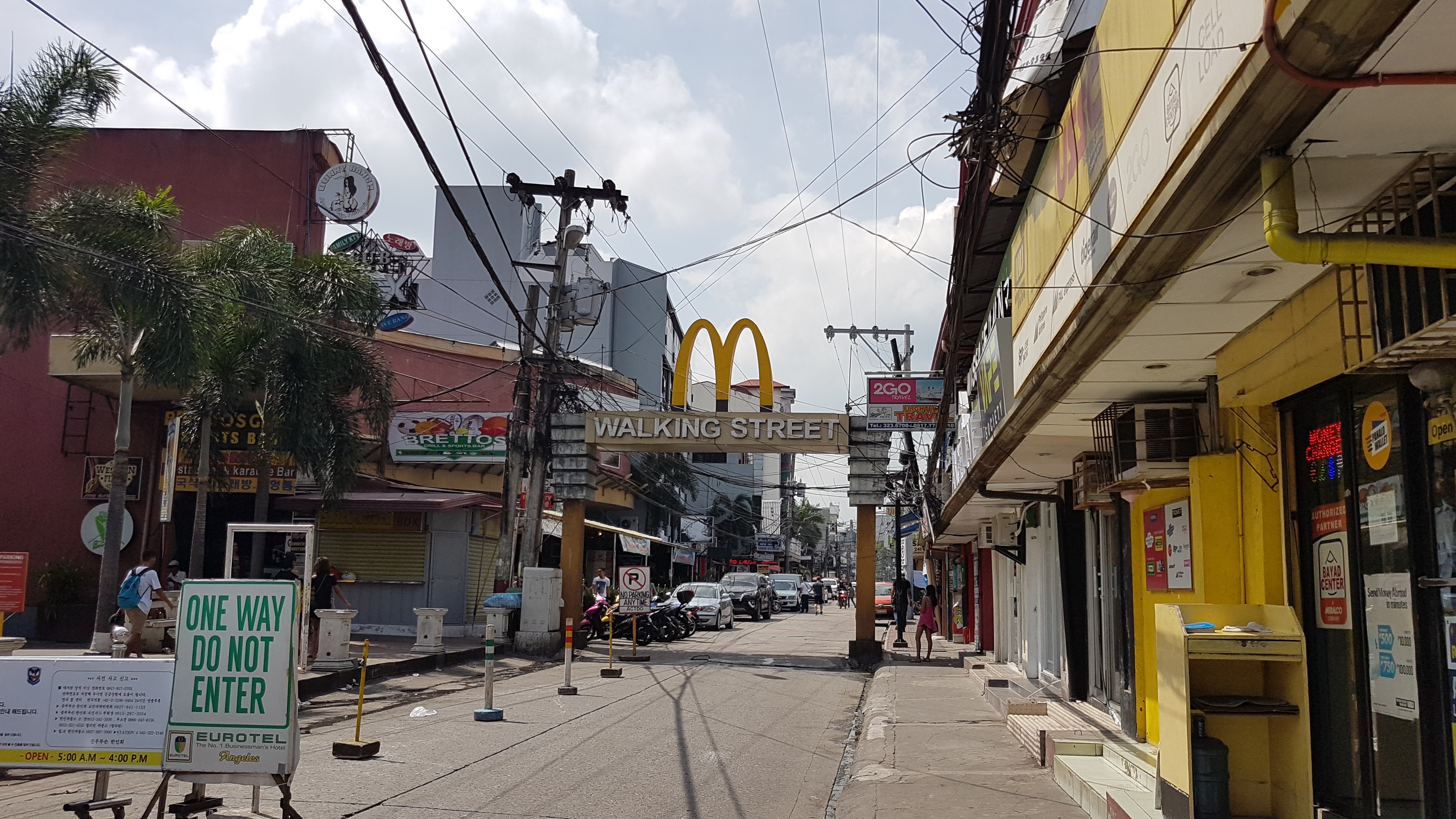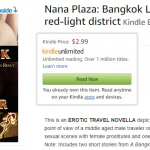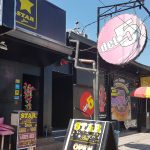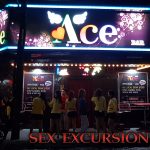
60 days in Angeles City: 2
Nathan Renly |October 23, 2018
[Start]
[continued from]
For a stay of two months, I could have done what many long-term visitors do and negotiate with a hotel for a monthly rate. That advantage of that would be daily maid service, but the drawbacks would be the lack of a kitchen and a small space. I wanted to live like an expat, the way I might if I retired there, and I certainly wouldn’t be living in a hotel.
Before my trip, I browsed AirBnB and narrowed my search down to a couple high-rise condos close to Fields Avenue. Times have changed since my first trip. Good luck finding buildings such as those in 1999! There were several residences for rent in Kandi Towers and it seemed like the better choice, but closer to the action at Icon Condominiums appeared a better deal. I put out a post to one my Facebook groups and an owner messaged within hours.
I didn’t take much with me, only a backpack as usual. After my 50th or so roundtrip flight across the Pacific, a $3 bus ride from Manila, and a 20 cent Philippine Jeepney ride, I found myself on Walking Street at 2pm.
And sweating buckets.
I always underestimate the Philippines, especially in April. I’m a Pacific-Southwest boy, long accustomed to dry high-pressure. When I find myself on foot in the middle of the day under the tropical sun, my body rebels, and I become sluggish, even though it’s 10 degrees cooler than the average summer day in my home town.
April is summer in the Philippines, even college is out during these months. Only two months of summer, and when you are here year-round, you understand how well it fits. April and May are hot and dry. Thunderstorms roll in around May 20 and keep coming until September, making up the rainy season. October and November are bearable, and winter, December to March, are straight pleasant. Visitors should always choose winter for their visits to Angeles City. Why my mother decided to give birth to me in May, I’ll never understand, she was being quite inconsiderate.
“Trike, sir?” a young Filipino man said to me.
He sat on a 150cc motorbike with a small sidecar at the end of the street. He wore a faded pair of denim jeans and a thick long sleeve cotton shirt. His hands and face were blackened from years of working in the sun, and his clothes were blackened from soot.
“God damn, it’s hot!” I yelled to him.
“Yes, sir, very hot, na[1]! Where you go sir?”
In Angeles, the going rate for a Trike ride is 100 pesos. Around 2011, all the drivers got together and bumped up the prices for foreigners from 50 pesos. Nowhere else in the Philippines will you find a rate for a short ride more than 50 pesos. Since then, I’ve strived to not use them, either renting a scooter or taking jeepneys.
From Manila, there are buses directly to SM Clark Mall from the airport. SM Clark is in the Clark Freeport zone, or “the base.” It’s an area reclaimed from the American Military in 90s and used to build modern industrial and commercial centers. Wide streets, traffic lights, and spaced storefronts remind the visitor of any first-world country. As soon as you step across outside the base and onto Fields Avenue, which connects with Walking Street, it becomes 3rd-world, with shacks, packed in storefronts, and congested roads.
I took the bus from Pasay in Manila, the way I’ve done it for over a decade, after stopping in some Manila bars, for a taste of the good stuff. Mongering in Manila doesn’t quite have the feel of Angeles City. The girls are more career-oriented, working in the business because they wish to, rather than a necessity. That bus dropped me off in the Dau bus terminal, a couple miles away.
Getting a jeepney from Dau is easy enough. Simply walk to the main road and flag one down. There will be dozens pass by within five minutes. The problem is figuring out where they go. Some will say “SM Clark” and others will say “Checkpoint.” Checkpoint is the jeepney terminal at the end of Walking Street where it connects to Fields Avenue, very close to my apartment building.
I thought I had it figured out, but I found myself standing on the end of Walking Street at MacArthur Highway, staring at a McDonald’s and the throngs of Filipino workers on their lunch break. I knew enough to get out of the jeepney once it made its way past the roundabout at the entrance to the base. Staying on would have taken me to Angeles City downtown or even San Fernando. Nothing to see down there. To this day, I’m still baffled at how I got into a jeepney that said checkpoint that didn’t go to checkpoint. The Philippines is foreign to me and always will be.
“Do you know Icon Condominiums?” I asked.
“Icon?” he asked. “Yes, sir!”
The young man stood up and kicked the jumpstart on his bike several times, jolting the entire contraption. I threw my backpack in the sidecar and climbed in, barely able to fit us both. So many girls I’d crammed in these things with over the years, it felt similar, my backpack sized about the same as a bargirl. I need to rent a scooter.
Still open to vehicle traffic, he whipped the trike down Walking Street and over its ruts and potholes, the tin walls of the side car rattling with every bump. Several years ago, they cobbled the street and for about a year, it looked hip and modern, but sometimes construction in the Philippines doesn’t live up to world standards and after two years, most of the stones had faded and buckled, and the road became full of holes you could trip on. Now, most of the stones are gone and the road is nothing but the flimsy concrete they placed under. You can still see some of the design of the stones in places, but for most of the road, you’d think it was decades old, not years. For the first time this trip, I noticed some sections roped off where they were trying to patch the holes, I’d guess at least to keep the old foreigners from breaking their hip. I’m sure they’ve given up on the cobble stones though.
More Korean lettering on the street. Often, the Korean visitors are blamed for the increasing prices in Angeles City, from food to blowjobs. While it could be a small factor, it more likely has to do with the increased visitation and not where they are from. The Philippines is booming, regardless, I can tell by the multiplying high-rises in Manila and the exchange rate. Inflation precedes currency fluctuation and my American dollar is worth almost 20% more than it was only 5 years ago, roughly the same as the increase in barfines, not that barfines should have much effect on global exchange rates, but you never know.
Despite the price increases, or maybe because of, Angeles City is threatening to become a vibrant modern city. Money is being invested here, on and off Walking Street.
New bars had opened since my last visit, Club Ra would prove to be a favorite of mine. Club XS occupied a prime center spot on the road, though I’d never find much action in there. I was turned off by the increased barfine, up to 3600 for the bigger clubs such as XS, Dollhouse, and Club Atlantis. The unpretentious Kokomo’s sat mid-street as always, its regular afternoon beer-drinkers setting up camp on its street-facing bar as usual.
At the other end of Walking Street, as the trike pulled into the congested traffic of Fields Avenue, Envy had recently opened. The prime spot had sat empty for years. Envy’s well-constructed restaurant space and coffee shop had street facing tables and bars sat far enough back to avoid constant pestering from street vendors and beggars but close enough to enjoy people watching. It looked to be the perfect spot to waste some evenings.
Beyond that, on Fields Avenue, little had changed. The shanty town as I’ve known it for two decades sat neglected as usual, with its row of storefronts and the occasional hole-in-the-wall bar.
The trike turned left off the main road, lurched over a mound in the road, placed there for no discernable reason, and careened around speedbumps on its way to Icon. The building sat at the end of Teodoro Street, shining like a mural above the poor city, with its concrete brown painted walls.
I threw my bag out of the side car and strained myself into a standing position.
“Hello, sir, can I help you?” asked a security guard, grabbing my backpack and slinging it over his shoulder.
Security guards are a common sight in the Philippines. They typically wear white long sleeve button-up shirts with a badge and long policeman-style pants. All of them carry a pistol and some other form of weapon, some of them carry a shotgun with a shoulder strap. It’s an easy job to acquire for the multitudes of young Filipinos entering the work force, and therefor the quality of the man doing the job varies.
“Hello, I’m moving in,” I said.
“Who is your owner? Is it Mike?” he asked.
“Yes, how’d you know?” I said.
“I knew you were coming, sir,” he said. “I’m Alvin.”
“I’m Nate”
“Very nice to meet you, sir,” he said.
The young, handsome man shook my hand eagerly, still with my backpack hanging off him. Then he led me inside and to an office.
Over my two month stay, I’d come to know Alvin better than any Filipino man in my life. He helped to save me from myself in Angeles City. I had no idea of the drama into which I would plunge and bring to those apartments. It’s possible he even saved my life.
[1] Na – Filipinos often speak and write “now” more like “na.”







Leave a Reply
You must be logged in to post a comment.